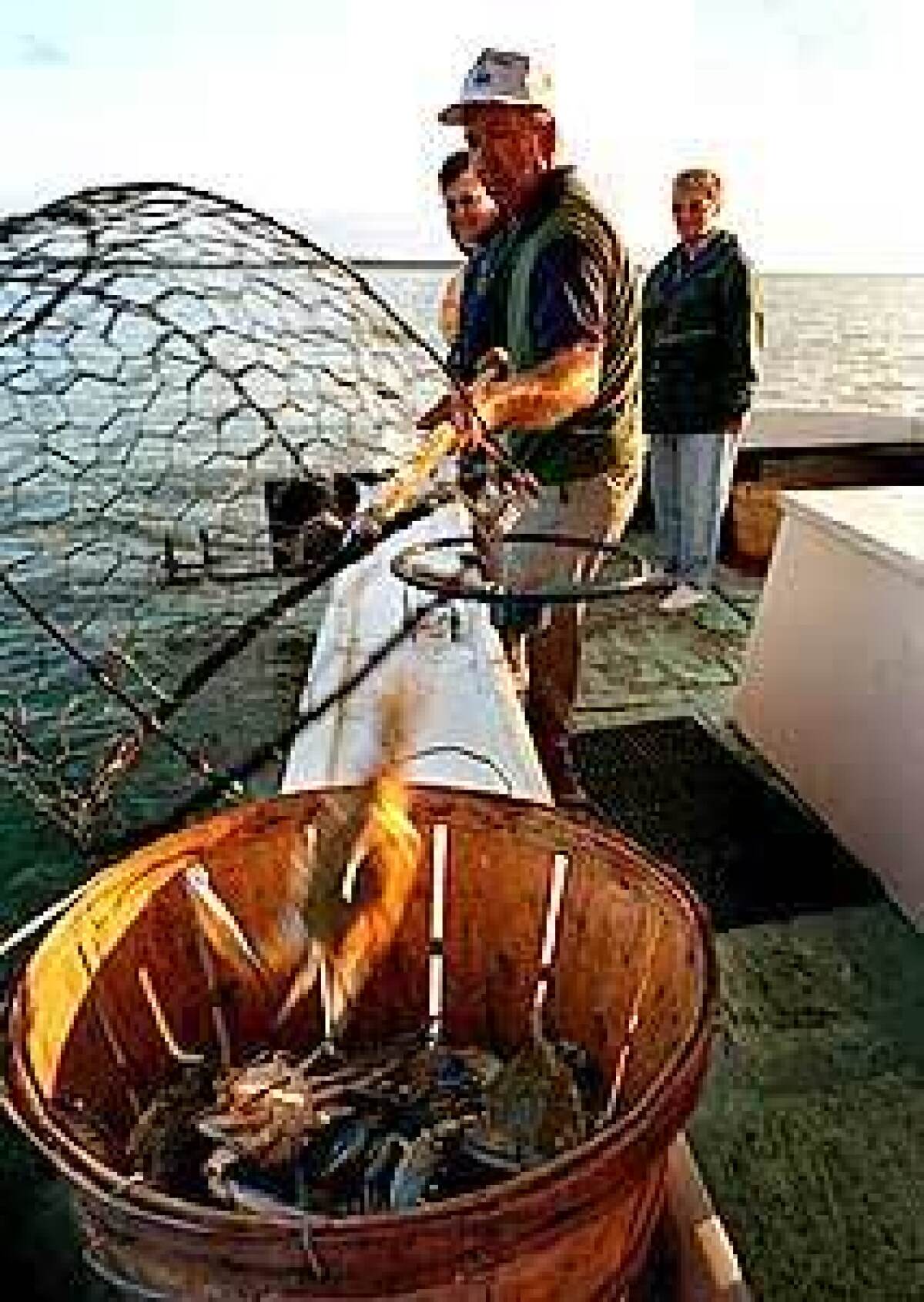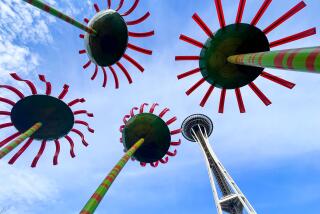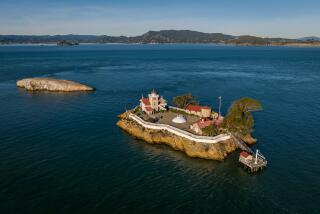Peak Season on Chesapeake Bay

OXFORD, Md. — You see them everywhere on Maryland’s Eastern Shore, the weekend sailors. They are unmistakable with their deep tans, their baggy shorts, their frayed polo shirts, their Top-Siders worn without socks. Some may not even own their own boats, much less win regattas, but they are inexorably drawn to the Chesapeake Bay.
It’s all about the water here, beginning with the sprawling but shallow bay, 200 miles long and up to 20 miles wide. Forty or so rivers flow into it, yielding more places to mess around in boats and a world of soggy marshes beloved by fishermen, kayakers and birds. Then there’s the convoluted shoreline, 8,000 miles of it meandering along Maryland and Virginia, where people who don’t want to get wet can gaze hypnotically at the water.
By coincidence, Handel’s “Water Music” was playing on the radio recently as I crossed the Bay Bridge on my way from Washington, D.C., to Rock Hall, Md. It’s about an hour-and-a-half drive provided you’re not traveling east on a Friday afternoon or west on a Sunday afternoon, when traffic can be gruesome. I planned to spend four nights in the bayside hamlets of Rock Hall and Oxford, partly because this part of the Chesapeake shore is close to Washington, partly because these villages are Eastern Shore classics: historic, pastoral and on the water.
Even though the area is a popular getaway spot for weekenders and my trip was spur of the moment, I was able to snag reservations at two appealing inns--a Colonial reproduction in Rock Hall and the genuine article, built in 1700, in Oxford. I planned to spend my days boating, eating as many Chesapeake Bay blue crabs as possible and making a little study of Eastern Shore locals.
For city folk like me, they’re interesting, even exotic--the weather-beaten crabbers and oystermen called “watermen,” gentlemen-farmers and sharecroppers, boat builders, antiques dealers--all of whom sound like Southerners with mouthfuls of marbles when they talk. (In some ways Maryland, a slave state that fought on the Union side during the Civil War, is more southern than history and geography would suggest.)
Retirees and city people with summer homes have flocked to the east side of the Chesapeake, making true Eastern Shore natives seem like a dying breed. Still, locals--above all the watermen who ply the bay for increasingly scarce crabs and oysters--give these flatlands their color and prized backwater feeling.
In summer, the Chesapeake Bay sailing set arrives, cousins of New York yachties who favor Long Island Sound and Bostonians who have boat slips on Cape Cod. Think of patrician Katharine Hepburn and Cary Grant in the 1940 movie “The Philadelphia Story,” reminiscing about their old yacht. “My, she was yar,” Hepburn says.
Lacking boats of their own, tourists get out on the water however they can or simply sample the pleasures of country life. They bike with picnic baskets, crack open steamed crabs in dockside restaurants and stay in graceful bed-and-breakfast inns that smell of boxwood and furniture polish.
One of the country pleasures I enjoyed on the way from Rock Hall to the Inn at Osprey Point, where I had reserved a room for two nights, was being stopped by a policewoman for going 39 mph in a 30-mph zone. “You better slow your butt down,” she said, and then gave me a warning, not a ticket. Later, a woman in a Rock Hall marina shop commiserated with me about the incident. “We don’t have much to do around here,” she said.
That’s Rock Hall. The town sits near the mouth of the Chester River, just north of the Eastern Neck Island National Wildlife Refuge. It’s sleepier and scruffier than other Eastern Shore havens, such as chic St. Michaels, and it has but one traffic light, a tiny business district, a grocery store, a rusty water tower, modest working-class homes with a surprising array of lawn ornaments, a cafe that opens at 4 a.m. (presumably for fishermen), half a dozen or so marinas and water on three sides.
I explored the marinas, such as Spring Cove, where there’s a sailing school, and Haven Harbour, where a sailing shop called the Ditty Bag sells everything from Boat Zoap Plus to fast-dissolving toilet paper. The shop also keeps the key to the minuscule Waterman’s Museum next door, where I learned that “peelers” are soft-shell crabs (harvested during molting season, from May till early fall, after they’ve shed their hard shells and can be eaten whole), and that once-abundant Chesapeake Bay oysters succumbed to parasites around the turn of the last century. Small as it is, the museum beguiles, especially the re-creation of one of the portable shanties used for shelter by watermen in winter. The exhibit had a mannequin waterman sleeping in a bunk and a plate of biscuits on the table.
The Inn at Osprey Point, just down the road from Haven Harbor, is a beige three-story Colonial, a copy of the 18th century Coke-Garrett House in Virginia’s Colonial Williamsburg. My room on the second floor had the elegant, spare look of the Revolutionary War era: burnished wood floors covered with Oriental rugs, white walls with green trim, pictures of sailing ships and three windows overlooking the water. The owners are a group of Philadelphia businessmen, so the place doesn’t feel as homey as B&Bs that have on-site owners, but it’s a popular spot for weddings. It has a handsome restaurant (with undistinguished food, alas), a pool, bikes, whirlpool tubs and views of Osprey Point Marina, where a family of swans cruises and sailboats with names like Anywhere, Procrastinator and Hornpipe are moored.
At breakfast I got to talking with Jerry Messina, one of the inn’s owners, who was there for a meeting. While the staff prepared for yet another wedding weekend, I kiddingly asked him if he was the groom. He almost jumped out of his Top-Siders, apparently gunshy when it comes to matrimony. He’s a lawyer in Philly who owns a good bit of property in Rock Hall and, as a past winner of the bay’s vaunted Huntingfield Cup regatta, clearly knows his way around a boat.
Besides sailing, there are plenty of ways to enjoy the Rock Hall area, on and off the water. I took a kayaking tour with a company that also sells rowing shells. The sky was stormy, but owner Tom McGlinn said that “the man”--the TV weatherman, in Eastern Shore vernacular--was predicting it would soon blow over. My guide, Dean Ramon Gardels, and I pushed off from Skinners Neck boat ramp and tootled around Grays Inn Creek watching for great blue herons and ospreys while the ambivalent current changed with each new gust of wind.
Another day, I biked about eight miles from Rock Hall to Eastern Neck Island National Wildlife Refuge, an easy trip because the Eastern Shore is so flat. On the way, I passed through a verdant countryside of farm fields, swamplands and stands of spindly loblolly pine.
A bend in the two-lane highway, Maryland 445, took me past Trumpington Manor (part of a 1658 English land grant), then over a wooden bridge where a man was fishing for white perch. The wildlife refuge is a popular spot for bird-watchers, but at the visitors center near land’s end, instead I saw butterflies flitting above allergy-inducing fields of ragweed and Queen Anne’s lace.
Aimlessly driving country roads is another favorite Eastern Shore pastime. From Rock Hall I followed Maryland 20 about 15 miles northeast to Chestertown, one of the most historic villages in the region and to my mind the prettiest. Distinguished old mansions line the Chester River there, with lawns sloping gently to the banks. In town, the roots of old trees buckle the brick sidewalks, attorneys’ offices still line 19th century Lawyer’s Row and the knowledgeable clerk in the Compleat Bookseller on High Street wears a bow tie, as he should.
Then I shunpiked north to Hopkins Game Farm near little Kennedyville, where practice rounds for the Great American Sporting Clay Championship were underway and I could hardly tear myself away from a wire cage containing five black Labrador retriever puppies for sale. Munching a soft-shell crab sandwich from the concession stand, I watched contestants shoulder their guns and call “pull.” At that, bright orange disks were released into the sky, followed by a racket of gunshot and a shower of clay pigeon shards.
About a 15-minute drive northeast of there I found Dixon’s Furniture in the hamlet of Crumpton. The big green garage at the corner of highways 544 and 290 is known for its Wednesday auctions, attended by locals, tourists and serious antiques dealers. I started with a hot dog in a delicious soft pretzel bun served by one of the Amish folk who run the snack shops, then had a hand-dipped ice cream cone while perusing the homemade canned goods for sale--peaches, pickled watermelon rind, chowchow (pickled vegetables)--and a bizarre collection of items up for auction. The auctioneer went from table to table, selling mostly bric-a-brac. A stuffed fox went for $30 (as the proud owner took it away, its tail fell off), and the bidding heated up over a set of six blue oyster plates that eventually sold for $375.
Toward the end of the day, the sky blackened and dangerous-looking clouds pushed in from the bay. I was on a country road when it started to rain and hail, so I pulled over to watch the show. On the radio I heard that tornadoes had been sighted and, later, that high winds had blown over the 460-year-old Wye Oak, an Eastern Shore landmark about 20 miles east of the Bay Bridge.
The storm left behind a soft, pearly sunset, which I enjoyed from the deck at Waterman’s Crab House in Rock Hall. Like the Crab Claw in St. Michaels and Pier Street Restaurant in Oxford, Waterman’s is a casual waterfront place with picnic tables. Steamed blue crabs are served on brown paper, not plates, and wooden mallets are provided for busting open the shells. Extracting the meat is a messy business but more fun than a food fight. Nevertheless, that night I had the easier-to-handle crab cakes, filled with huge, succulent lumps.
To find out how the shellfish delicacy is harvested, I moved south to Oxford, about a 45-minute drive east of Tilghman Island, where I’d arranged to go crabbing on the Miss Kim, a motorboat out of Dogwood Harbor. Capt. Wade H. Murphy Jr., who has worked on the bay for 45 years, told me to get there at 5:30 a.m. The four-hour trip costs $30, or $60 with a bushel of crabs, if we caught them.
Capt. Wade is a spry, sunburned showman of about 60 who can steer a boat, net crabs and eat a banana at the same time. From a family of bona fide watermen going back three generations, he claimed to have once taken 78 bushels of blue crabs out of the Chesapeake in a day. Of late, though, he’s found catering to tourists more lucrative. On this trip there were four of us, me and three ministers from Ohio, who would come east to attend sailing school in Annapolis.
On our way out of the harbor, the captain explained how crabs reproduce, told jokes and denounced the state of Maryland for its conservation policies, which he believes have done little to increase the dwindling number of oysters and crabs in the bay. Then he laid out a fishing line half a mile long, called a trotline, baited with chicken necks. As he began reeling it in, he used a long-handled net to scoop up the crabs that had latched onto the chicken parts, dumping them into a bushel basket. We all got a chance to try, while Wade encouraged and harangued. If we missed one, he fumed like a Little League dad, “You didn’t go deep enough.” In the end, we got only one bushel, which the ministers planned to cook at a nearby park.
Later I went out on the bay again with the captain in the Rebecca T. Ruark, the oldest oyster-dredging sailboat left on the Chesapeake. Only about a dozen of these handsome, high-masted vessels, known as skipjacks, still work the bay, which has earned them recognition from the National Trust for Historic Preservation. At the Chesapeake Bay Maritime Museum in nearby St. Michaels, a vintage skipjack called the Lady Katie is being restored.
Wade is justifiably proud of the Rebecca. Built in 1886, it is truly yar, accommodating about 15 passengers who help raise the sails. They squeak and groan as they’re hoisted, hang limp for a minute, then catch the breeze and billow. A majestic sight, though mostly I loved the two-hour trip because I had forgotten how clean and healthy sailing makes me feel.
East of Tilghman Island, in St. Michaels, I had oysters on the half-shell at the Crab Claw, apparently a required stop for all tourists but lacking the down-home atmosphere of Waterman’s in Rock Hall. I also visited the Chesapeake Bay Maritime Museum (a complex of boats and buildings at Navy Point) and spent a little time in the town’s touristy shops. Bellevue Road is the scenic route from there to Oxford, crossing the wide Tred Avon River on the Oxford-Bellevue ferry, established in 1683. It lets you off at the doorstep of the venerable Robert Morris Inn, with a Colonial-style restaurant and tap room.
Oxford is leafy, quiet and lovely, the sort of place where couples get engaged. It’s full of marinas, boat stores and 18th and 19th century buildings, of which the yellow Robert Morris Inn, founded about 1700, is the crown jewel.
I stayed in one of the inn’s summer cottages, with waist-high wainscoting, a step-up king bed, a screened porch overlooking the water and a polished white clawfoot tub in which I took bubble baths as often as I could. Or I occupied an Adirondack chair on the lawn, watching sailboats come and go, wondering precisely why we’re magnetically drawn to the water.
It was a deep riddle, I decided, that would no doubt require many more visits to the Eastern Shore to solve.
More to Read
Sign up for The Wild
We’ll help you find the best places to hike, bike and run, as well as the perfect silent spots for meditation and yoga.
You may occasionally receive promotional content from the Los Angeles Times.






